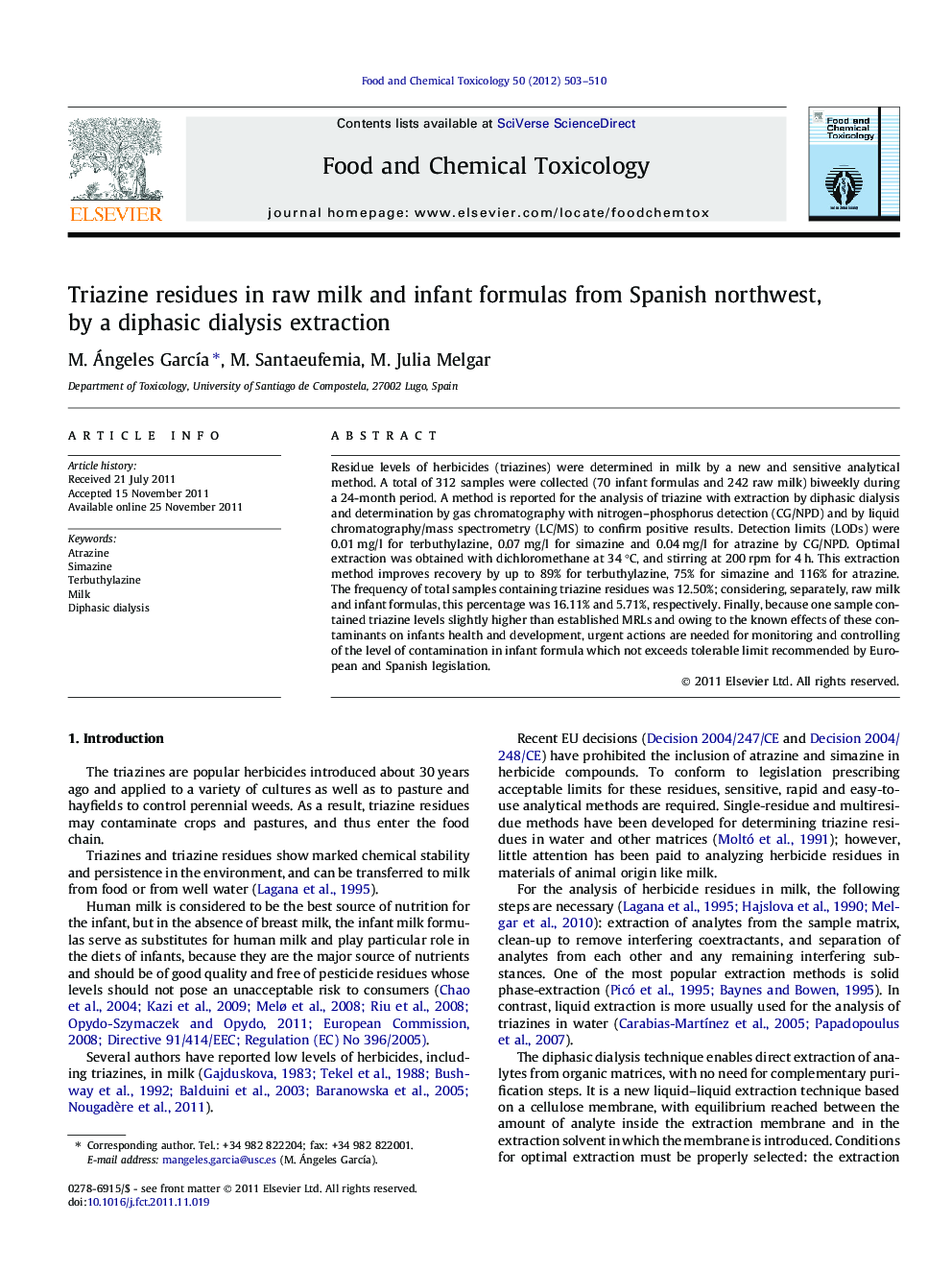| Article ID | Journal | Published Year | Pages | File Type |
|---|---|---|---|---|
| 5853512 | Food and Chemical Toxicology | 2012 | 8 Pages |
Residue levels of herbicides (triazines) were determined in milk by a new and sensitive analytical method. A total of 312 samples were collected (70 infant formulas and 242 raw milk) biweekly during a 24-month period. A method is reported for the analysis of triazine with extraction by diphasic dialysis and determination by gas chromatography with nitrogen-phosphorus detection (CG/NPD) and by liquid chromatography/mass spectrometry (LC/MS) to confirm positive results. Detection limits (LODs) were 0.01 mg/l for terbuthylazine, 0.07 mg/l for simazine and 0.04 mg/l for atrazine by CG/NPD. Optimal extraction was obtained with dichloromethane at 34 °C, and stirring at 200 rpm for 4 h. This extraction method improves recovery by up to 89% for terbuthylazine, 75% for simazine and 116% for atrazine. The frequency of total samples containing triazine residues was 12.50%; considering, separately, raw milk and infant formulas, this percentage was 16.11% and 5.71%, respectively. Finally, because one sample contained triazine levels slightly higher than established MRLs and owing to the known effects of these contaminants on infants health and development, urgent actions are needed for monitoring and controlling of the level of contamination in infant formula which not exceeds tolerable limit recommended by European and Spanish legislation.
⺠Study of three herbicides (triazines) in raw milk and infant formulas. ⺠Rapid and sensitive analytical method with extraction by diphasic dialysis and determination by chromatography techniques. ⺠Triazine residues in total samples were 12.50%, in raw milk 16.11% and in infant formulas 5.71%. ⺠Presence of triazines in infant formulas may represent a health risk to the child population.
